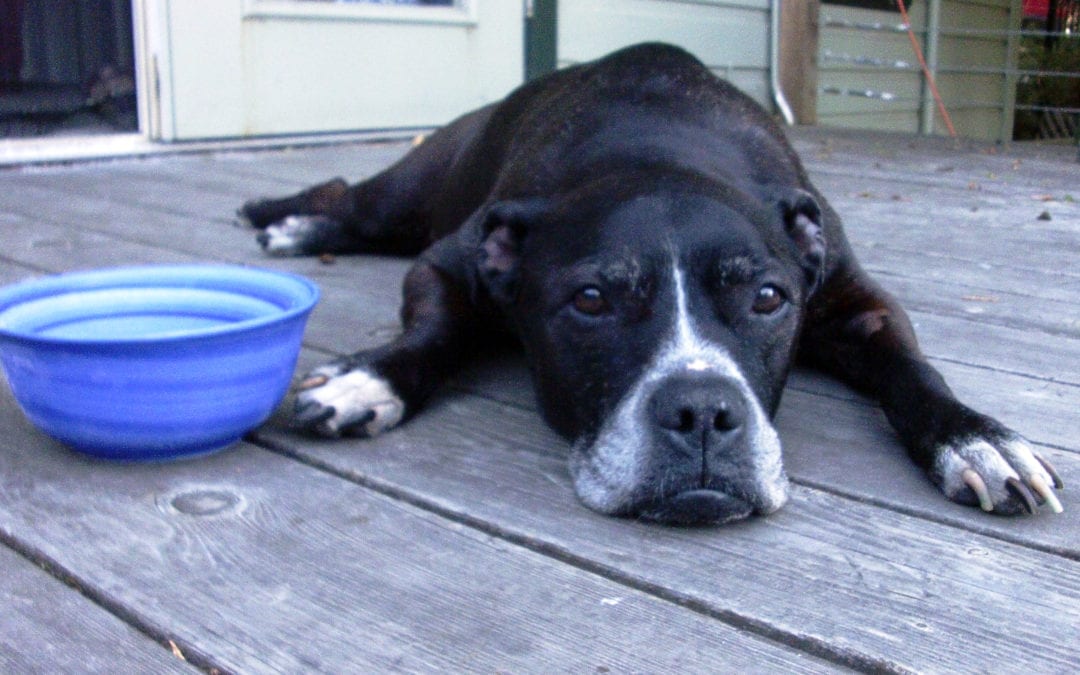It’s that time of the year again: time for cookouts, fun, and sun. With the summer heat come dangers for our pets. Dr. Andrea Walters, a veterinarian pursuing specialization in emergency and critical care at the University of Illinois Veterinary Teaching Hospital in Urbana, explains what heat stroke is and how to prevent it.
No Pet Left in Car
According to Dr. Walters, animals can overheat from an increase in environmental temperature or from too much exercise. One environment in particular accounts for more cases of heat stroke in pets than any other cause: being left in a hot car. Pets should never be left unattended in a car, even if it is just warm outside, as the temperature in a car can rise drastically in a matter of minutes.
“Heat stroke occurs when an animal’s body temperature increases so much that the temperature cannot be regulated properly and brought back down,” says Dr. Walters. “Dogs don’t sweat like people do. Instead, they pant to cool themselves down.”
Factors that predispose animals to heat stroke include obesity, brachycephalics (the term for “short-nosed” dogs such as pugs, Boston terriers, and English bulldogs), genetics, heart disease, humidity, water immersion, and not being acclimated to a warm climate.
Seek Treatment Fast
Heat stroke can be deadly. If it is suspected, the animal should be brought to a veterinarian immediately for treatment.
“Heat stroke causes damage to proteins and cells, which can lead to severe shock and cellular dysfunction when blood vessels near the skin dilate dangerously,” says Dr. Walters. “This state of shock causes secondary damage to organs such as the liver, gastrointestinal system, kidneys, and heart.”
Signs of heat stroke include excessive salivation, increased panting, diarrhea, vomiting, depression, and dizziness.
It is important to begin lowering the animal’s temperature as soon as possible, even before transporting the animal to a veterinarian. A hose can be used to cool the animal, focusing the stream of water on the belly and paw pads.
Be sure the water coming out of the hose is cool, neither hot nor cold. If the garden hose has been sitting in the sun, the water in the hose will be very hot.
It is very important to not cool the animal too fast. A cool towel can be used to bring a pet’s core temperature down slowly. Lay the animal on towels soaked with cool water. Do not wrap the animal in the towel, however, because this will instead trap the heat.
“Veterinarians treat heat stroke patients with cool water, fans, intravenous fluids, and medications that help safely decrease an animal’s core temperature,” explains Dr. Walters.
Hard to Treat, Easy to Prevent
“Heat stroke is a serious medical emergency and can lead to death, even with quick action and appropriate treatment. The prognosis of a pet with heat stroke can vary depending on their previous health history, how high their core body temperature reached, and how long their core body temperature remains high.”
Luckily, heat stroke is easily preventable. Never leave a pet in a warm or hot car, even if it is just for a few minutes. When exercising your pup during the dog days of summer, make sure to provide plenty of water and breaks in the shade to cool off. Be especially careful when exercising brachycephalic breeds.
For more information about heat stroke in animals, contact your veterinarian.

